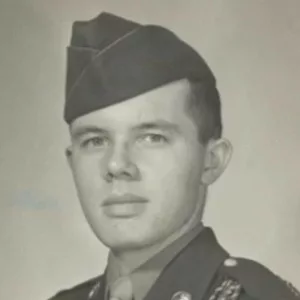100 Years of Care for Children
2020 commemorates the 100th year in which UW–Madison faculty and staff have been caring for hospitalized children.
I finished my internship at Eastern Maine General Hospital on June 30, 1955, and was due to start a pediatric residency at Fitzsimons Army Hospital in Denver — but not until July 1956. I was ordered to report to San Antonio on January 1, 1956, for six months of military training.
I was out of a job for six months.
I visited Wisconsin General Hospital, and the administrator, Dr. Harold Coon, hired me on the spot. He said, “You are the chief pediatric resident because you’re the only one who can speak English.”

Dr. John Gonce was a professor of pediatrics. Drs. Harry Waisman and Kenneth McDunnough were among the associate professors.
That summer of 1955, polio hit Wisconsin, and it hit hard. Two floors of the State Orthopedic Hospital went to poliomyelitis care, and cases of bulbar, intercostal and spinal polio came from all over the state.
Two of the residents went into hiding, so I was the only pediatric resident. Luckily, several anesthesia residents helped out. A rotating intern, Dr. Porter Smith, was an immense help. Many children and adults died at our hospital that summer. In August, 30 children died in 31 days, all of bulbar polio. Three children in one family died — one child each week over three weeks.
Bulbar cases would recover and die in their sleep weeks later. Families would keep a nurse at the bedside for months to prevent this. There were no monitors then.
It was a hot summer, and there was no air conditioning. I worked almost seven days and nights per week all summer.
We learned that the best way to do a tracheostomy was over a bronchoscope. This is where the anesthesia residents came in. An anesthesia resident, who also was a ballerina, contracted spinal poliomyelitis. She recovered and walked again, but her ballet career ended.
There was an engineering graduate student who had bulbar polio. During the acute week, he told me, “Just keep the foot of my bed elevated, and I’ll spit the saliva.”
After recovering, he came back to the State Orthopedic Hospital and coached several people through the bulbar phase without a tracheostomy.
The spinal and intercostal patients did not die, but many suffered permanent paraplegia or were committed to life in an “iron lung.” We did not ventilate those patients with an endotracheal tube as we do today.
I recall an 11-year-old patient who lost almost all of her muscles. She remained at the State Orthopedic Hospital for years.
Dr. McDunnough supervised polio care. Dr. Helen Dickie (pulmonology), Dr. Phillip Orth (anesthesiology) and Dr. Henry Okagaki (orthopedic surgery) were all involved.
There was a professor of physical medicine, whose name I have forgotten, whose staff administered the now-discarded “Sister Kenny” treatment.
Meanwhile, we still had to staff the Bradley Hospital. Dr. Jerry Blum, a rotating intern, became chief pediatric resident there, and he did a commendable job.
The Salk vaccine came out that summer — too late for Wisconsin. The year 1955 was the last nationwide epidemic. A state advisory asked metropolitan families not to go up north. The head of UW Student Health did move his family up north, and Dean William Middleton summarily fired him.
As an intern, I had been making $75 per month, with meals and laundry. UW paid me $50 per month, with limited meals and no laundry. I had a 1-year-old daughter and a wife, and I was broke. October came with no new polio cases, so I went on active duty early. I earned $450 per month with quarters allowance. What a change it was!
But I cannot, and never will, forget the great tragic summer of 1955.
Sincerely,
Ralph Olsen, MD ’54
Editor’s note: Ralph Olsen, MD ’54, earned his medical degree from the University of Wisconsin School of Medicine and Public Health. This essay, as written by Olsen, preserves his memories of a tragic time during the polio epidemic in Madison, Wisconsin, the following year.